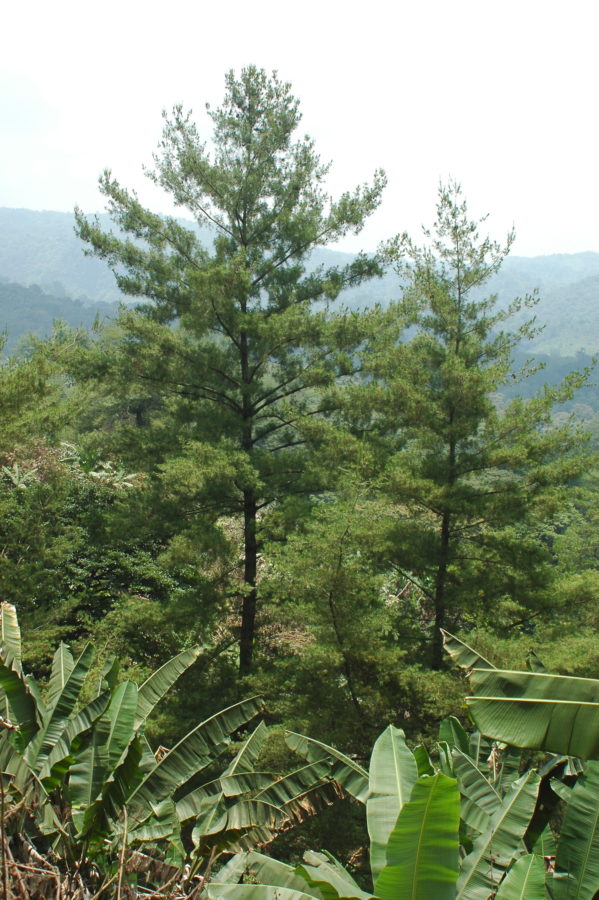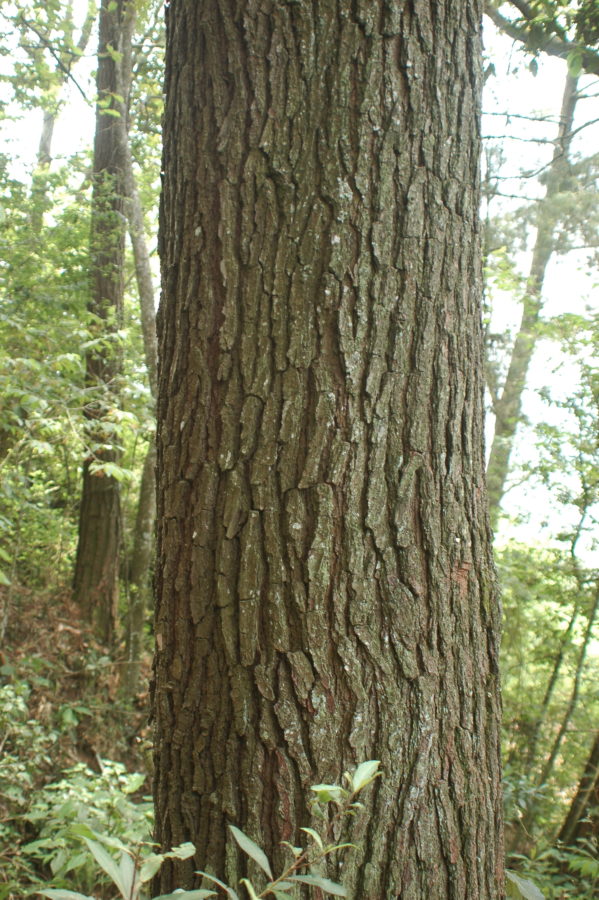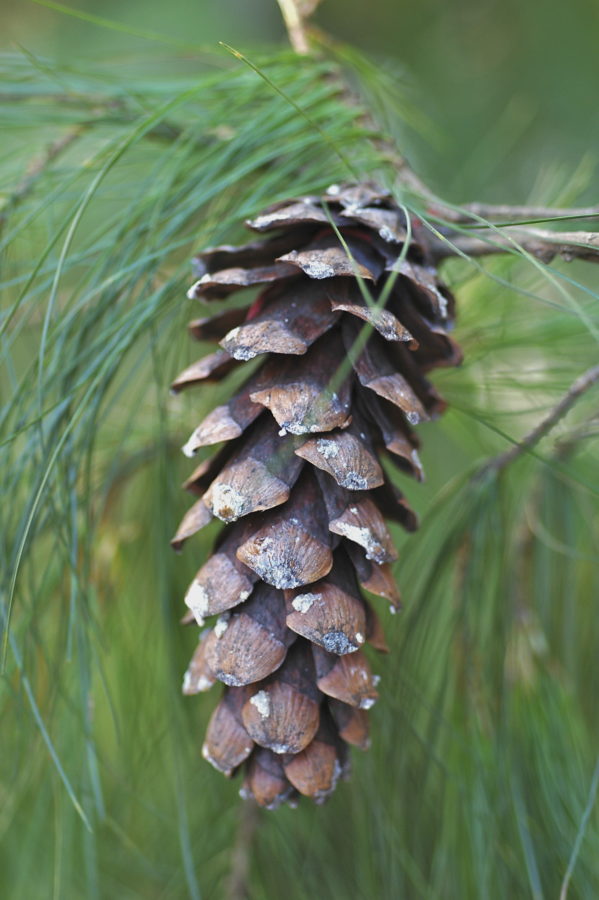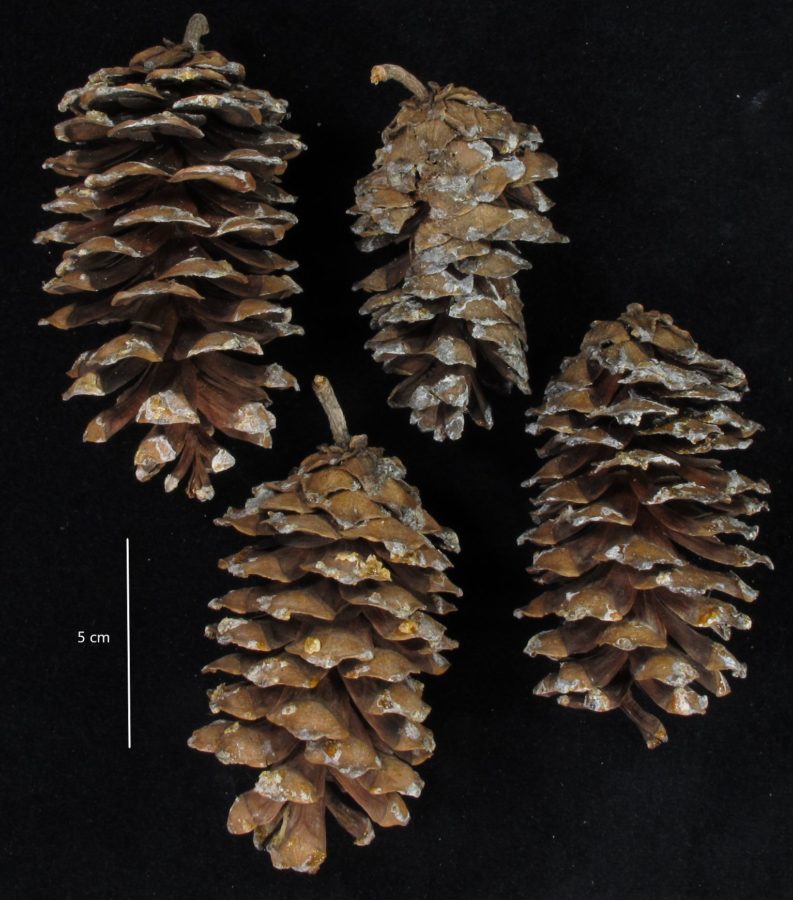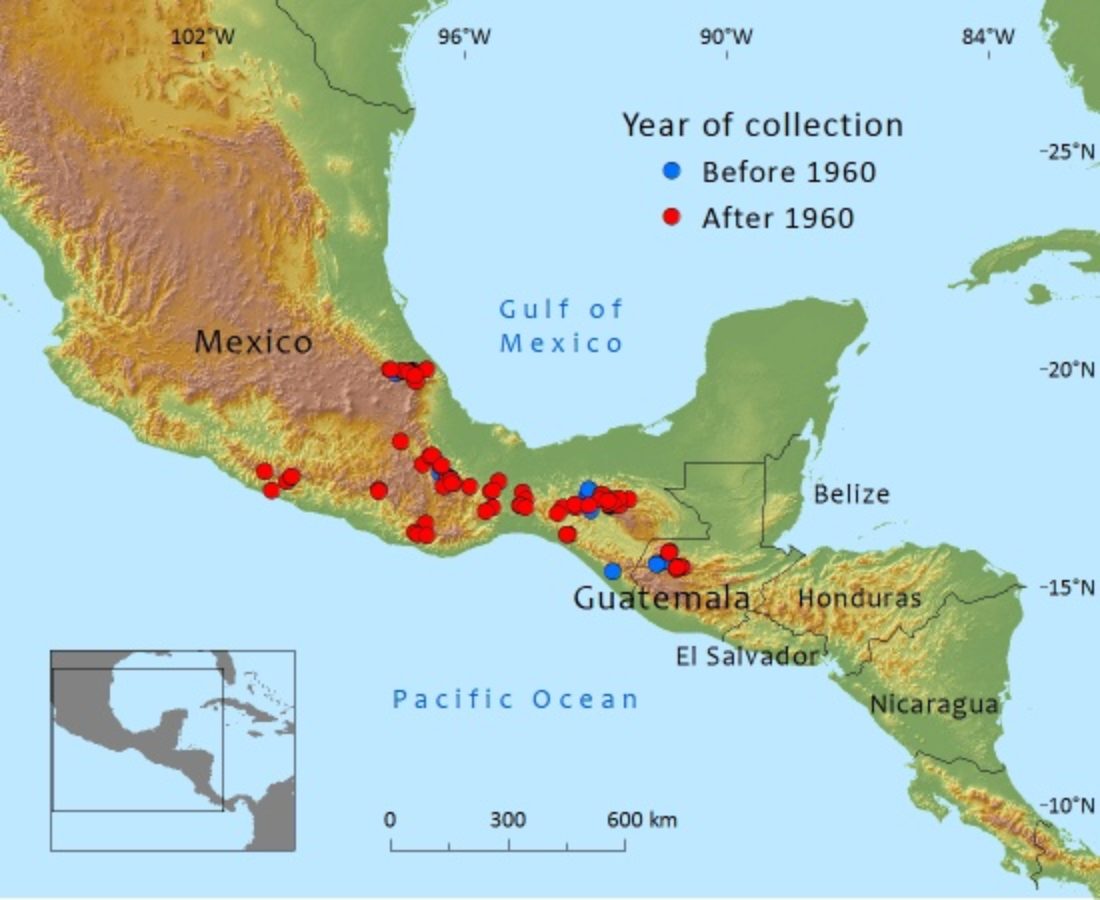Pinaceae
Pinus chiapensis
Distributed in southern Mexico and Guatemala where it has been logged and forests have been converted for agricultural use. On the IUCN Redlist, this species is listed as a variety of Pinus strobus L.
Human Uses
Logging for its timber has been widespread, and although large trees are becoming rare in many locations, is still ongoing. Logs are used as beams in roofs of rural houses and buildings. The wood is used as firewood for cooking and for furniture manufacturing, and may be preferred over that of other coexisting pine species. The wood was a source of pulp for industrial papermaking in Oaxaca, before commercial exploitation was restricted. The resin is a fuel source, and is successfully applied to humans and domestic animals as an ointment in wounds and bone fractures (del Castillo & Acosta Castellanos, 2002). A resin extract is said to be helpful as an analgesic for rheumatic pain, and an inner bark infusion can be helpful against coughing (Castillo et al., 2009).
References and further reading
- Andresen, J.W. (1964). The taxonomic status of Pinus chiapensis. Phytologia 10: 417-421.
- Castillo, R.F. & S. Trujillo. (2008). Effect of inbreeding depression on outcrossing rates among populations of a tropical pine. New Phytologist 177: 517-524.
- Castillo, R.F. & S. Acosta. (2002). Ethnobotanical notes on Pinus strobus var. chiapensis. Anales del Instituto de Biología, Universidad Nacional Autónoma de México, Serie Botánica 73(2): 319-327.
- Castillo, R.F., S. Trujillo-Argueta, N. Sanchez-Vargas & A.C. Newton. 2010. Genetic factors associated with population size may increase extinction risks and decrease colonization potential in a keystone tropical pine. Evolutionary Applications 4: 574-588.
- Castillo, R.F., S.T. Argueta & C. Sanjez-Romero. (2009). Pinus chiapensis, a keystone species: Genetics, ecology, and conservation. Forest Ecology and Management 257: 2201-2208.
- Dvorak, W.S. & Donahue, J.K. (1992). CAMCORE Cooperative Research Review 1980-1992. Forestry Department, North Carolina State University, CAMCORE (La Cooperativa de Recursos de Coníferas de Centroamérica y México), USA.
- Dvorak, W.S., Gutiérrez, E.A., Hodge, G.R., Romero, J.L., Stock, J. & Rivas, O. (2000). Pinus chiapensis. Conservation & Testing of Tropical & Subtropical Forest Tree Species by the CAMCORE Cooperative, pp. 34-51. College of Natural Resources, NC. USA.
- Farjon, A. (2010). A Handbook of the World's Conifers. Koninklijke Brill, Leiden.
- Perry, J.P. (1991). The Pines of Mexico and Central America. Timber Press, Portland.
- Santiago V., T., Ochoa G., S. & Alemán S., T. (1997). Guía para identificar pinos de la Meseta Central de Chiapas, México. Guías científicas ECOSUR.
- Syring, J., R.F. Del Castillo, R. Cronn & A. Liston. (2007). Multiple nuclear loci reveal the distinctiveness of the threatened neotropical Pinus chiapensis. Systematic Botany 32(4): 703-717.
- The Nature Conservancy. (1996). Natural Heritage Central Database. (Status and distribution data on Latin American plants, developed in collaboration with Latin American Conservation Data Centers and Missouri Botanical Garden).
- Thomas, P. & Farjon, A. (2013). Pinus strobus var. chiapensis. In: IUCN 2013. IUCN Red List of Threatened Species. Version 2013.1. <www.iucnredlist.org>. Downloaded on 13 July 2013.
- Wright, J. A., A. M. Marín V. & W. S. Dvorak. (1996). Conservation and use of the Pinus chiapensis resource in Colombia. Forest Ecology and Management 88: 283-288.
